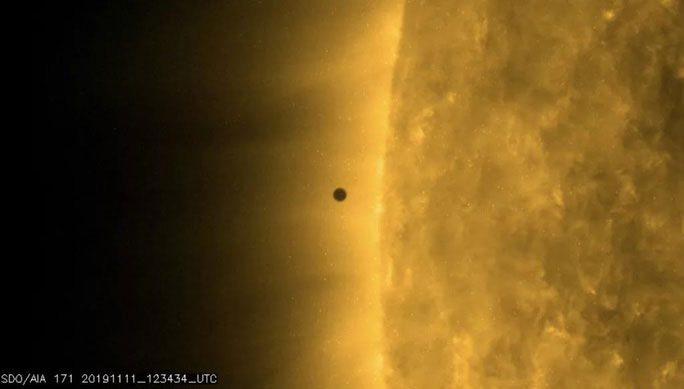Alongside the plasma punch that lit up the northern sky of Earth recently, the Sun also blasted its closest planet – Mercury – with a plasma tsunami.
According to Live Science, the origins of the two plasma punches to Earth and Mercury were observed by NASA on April 11. This was a coronal mass ejection (CME) from a seemingly dormant sunspot that unexpectedly came to life.
Earth was “hit” on April 14, causing a large area of the northern sky to blaze with auroras, threatening to disrupt navigation and communication systems. Mercury was “unluckier” due to its smaller size and proximity to the Sun, as it was struck by a full-blown tsunami on April 12.
 Mercury orbits the Sun – Photo: NASA/SDO/HMI/AIA
Mercury orbits the Sun – Photo: NASA/SDO/HMI/AIA
According to two studies led by Professor Hui Zhang from the Institute of Astrophysics at the University of Alaska Fairbanks, the processes occurring are quite similar to those on Earth, but the impacts are significantly greater, not only due to Mercury’s size but also because it has a weak magnetic field and almost no atmosphere.
On Earth, the powerful magnetosphere and dense atmosphere mitigate many of the effects of CMEs on living organisms and the planet’s environment, as well as on power grids and telecommunications systems.
The two studies by Professor Hui Zhang and colleagues, published in Nature Communications and Science China Technological Science, indicate that the recent CME was strong enough to violently blow material off Mercury, giving it a dust tail and transforming it into a “hybrid” planetary object akin to a comet.
It is also likely that a strange, mixed, and temporary atmosphere has formed on Mercury. This is because the solar wind – a constant stream of charged particles, including nuclei of elements such as helium, carbon, nitrogen, neon, and magnesium from the Sun – combined with the tidal waves of particles from the CME will continuously supply a small amount of atoms to Mercury, creating a thin atmosphere.
Our Sun is entering the most intense phase of activity in its 11-year cycle, and it is certain that more solar storms and CMEs will strike its planets, including Earth, in the near future.





















































